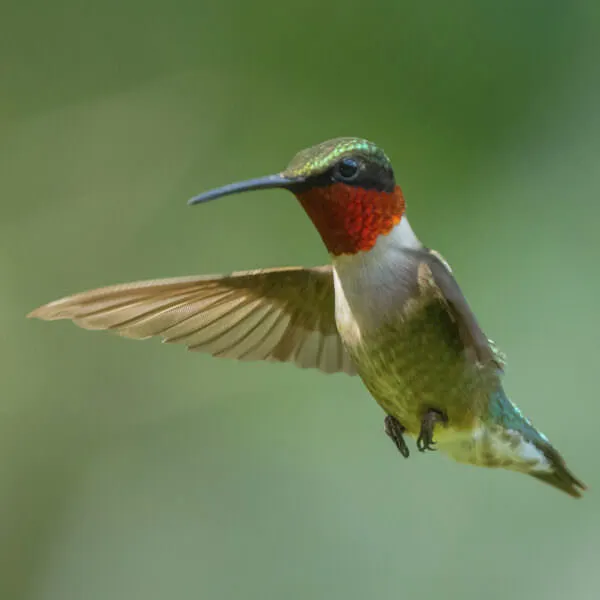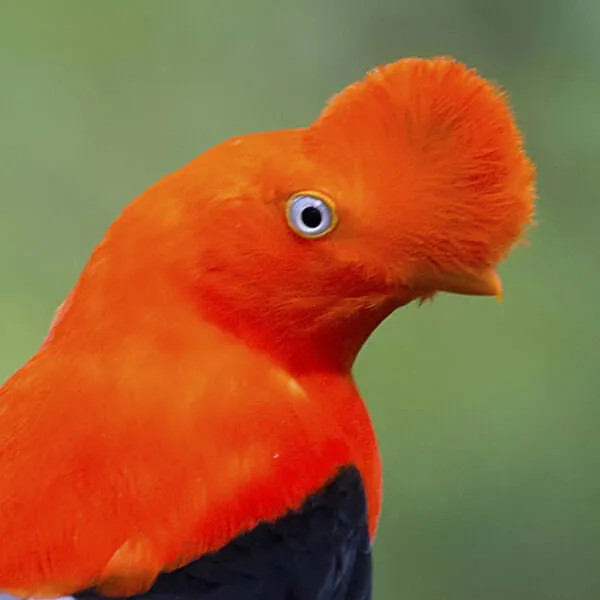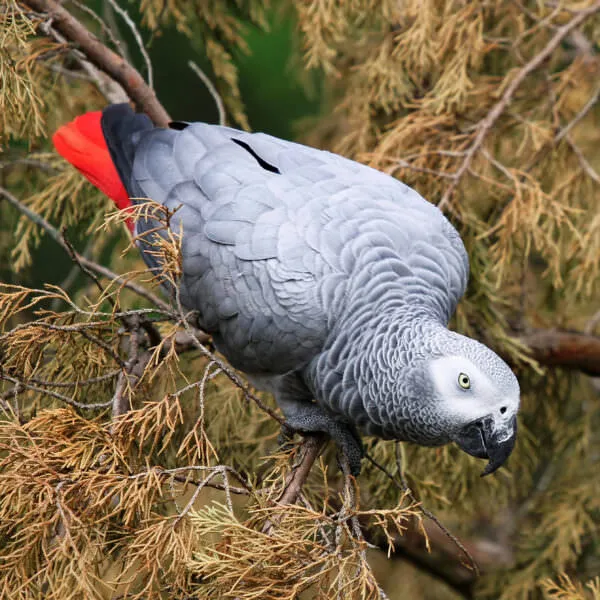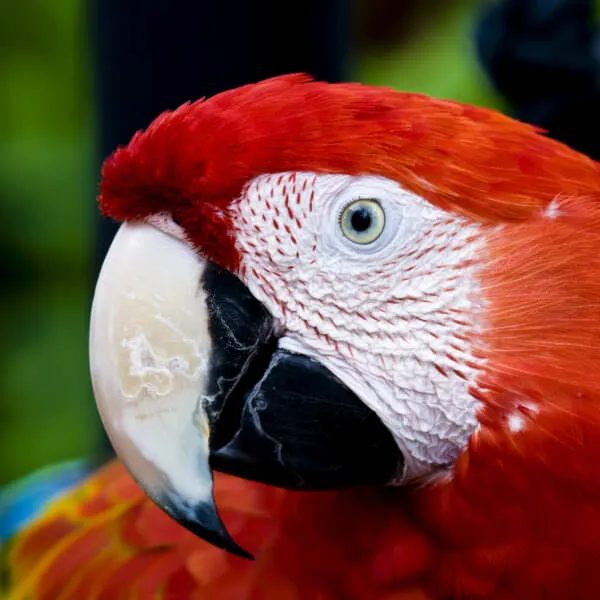Anatomy
Male ocellated turkeys look similar to the North American wild turkey, but have more vibrant coloring and weigh significantly less than the North American bird. Unlike North American turkeys, breast feathers of male and female ocellated turkeys do not differ and cannot be used to determine sex. The body feathers of both male and female ocellated turkeys are an iridescent bronze-green, with males more brightly colored than females. Males weigh just over ten pounds and average three feet in length. At around six pounds, females are slightly smaller, though they gain weight during the mating season.
Both sexes have bluish-gray tails with a well-defined, eye-shaped, blue-bronze colored spot near the end followed by bright gold tip. These spots give the ocellated turkey its name, as the Latin word for eye is oculus. Males and females have a blue-colored head and neck with distinctive orange to red, warty growths that are more pronounced on males. The head of the male also has a fleshy blue crown that is adorned with yellow-orange growths similar to those on the neck. Ocellated turkeys also have a distinct eye-ring of bright red colored skin, especially visible on adult males during the breeding season.
We're All In
Together, we're building a future where people and nature thrive. Sign up today and join our movement...
Habitat
The ocellated turkey is endemic to Mexico’s Yucatan Peninsula, Guatemala and Belize, and can be found across an area extending 50,000 miles. Ocellated turkeys are most often found in tropical deciduous and lowland evergreen forests as well as clearings and abandoned farm plots.
Diet
Ocellated turkeys tend to remain in small groups, and their diet consists mainly of seeds, berries, insects and leaves.
Threats
Large scale timbering operations followed by slash and burn agriculture in Central America threatens the habitat of the ocellated turkey. The alarming rate of this destruction is a major threat to the future of this beautiful bird.
Sources
- Jukofsky, Diane. Encyclopedia of Rainforests. Connecticut: Oryx Press, 2002.
- « Ocellated Turkey, » National Wild Turkey Federation website, 2007.
- IUCN Red List of Threatened Species



